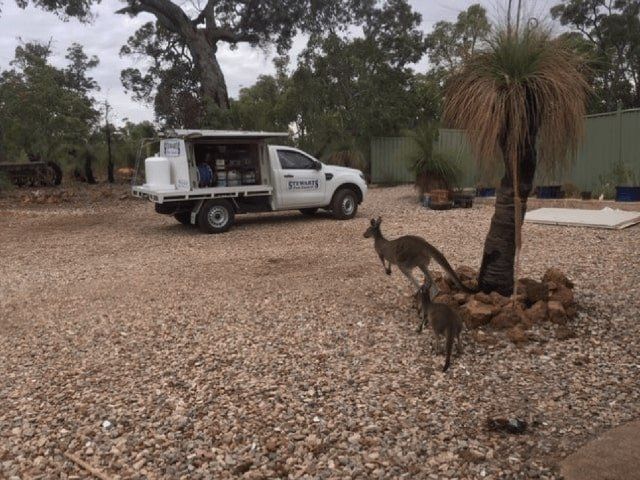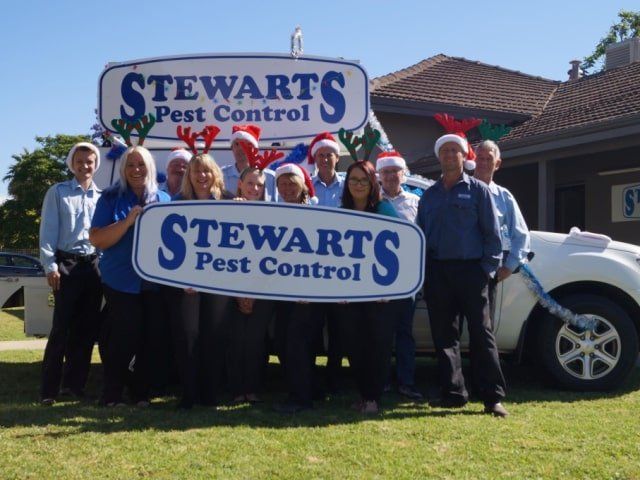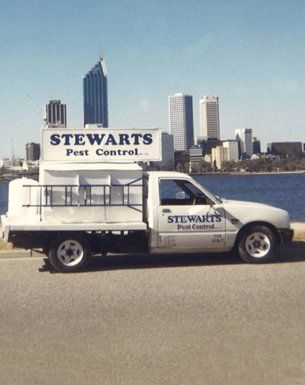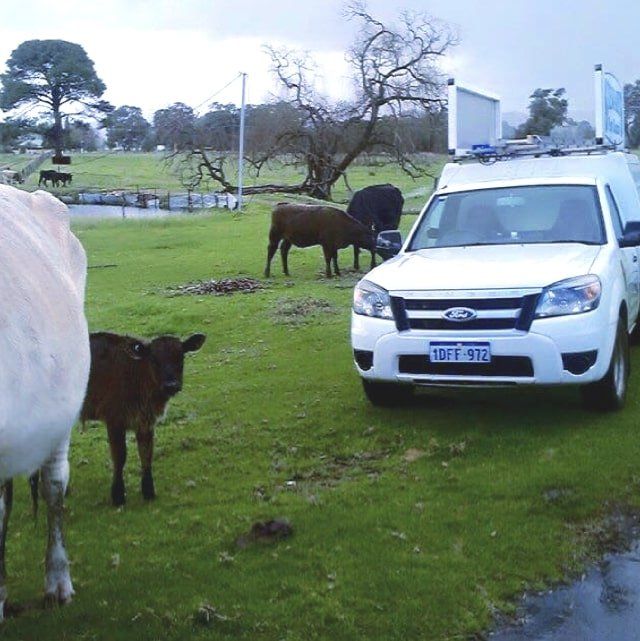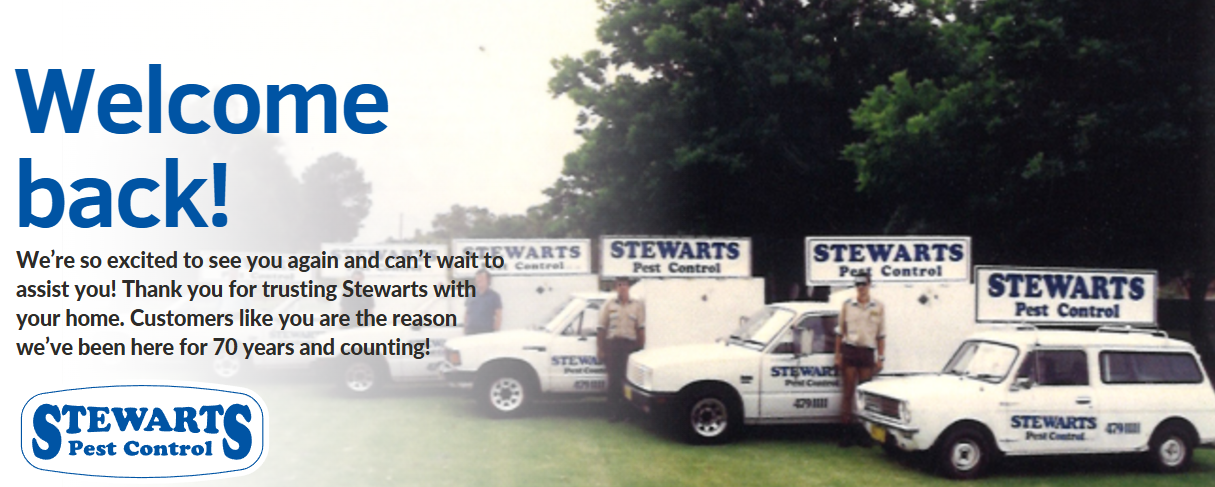
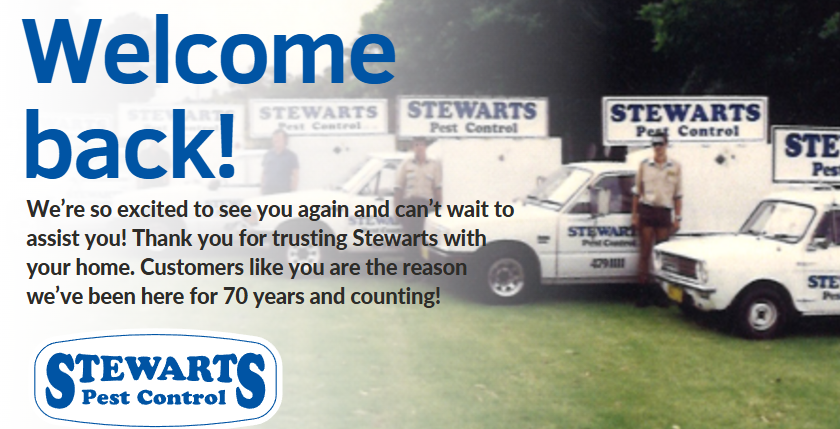
Get In Touch
- Mon - Sat
- -
- Sunday
- Appointment Only
TERMITE INSPECTION BOOKING (Existing Customers Only)
TERMITE INSPECTION BOOKING (Existing Customers Only)
Thank you for contacting us.
We will get back to you as soon as possible. Like us on Facebook or follow us on Instagram to stay updated!
Oops, there was an error sending your message.
Please try again!
PLEASE WAIT WHILE YOUR FORM SENDS
- Your booking is not yet confirmed -
You will be re-directed to another page that will confirm your booking has been sent. You will also receive a copy of your booking via email.
Please allow some time for this form to process, once it has process you will be re-directed to a thank you page. If you are not re-directed to this page, please again.
FAQs For Termite Treatments & Service Agreements
If you have a question that is not listed here, please give us a call on 92748444!
Please note that a Service Agreement only applies to customers who have had a full termite treatment to their home, applied by Stewarts Pest Control. Service Agreements are renewed every 12 months in accordance with the Australian Standards and Product Supplier. If you have yearly termite inspections, but your home does not have a full termite treatment you will not have a Service Agreement.
-
I have found Termites a few weeks/months after my Visual Termite Inspection. Did the technician who inspected my property miss this?
It’s natural to be concerned if you find termites after a recent inspection, but this doesn’t necessarily mean the technician missed them. Termites are constantly on the move, and their behavior can be unpredictable. Depending on the species in your area, they can travel significant distances—up to 100 meters—from their nest in search of food and may establish new pathways through the soil. If termites have entered your property after the inspection, this could be new activity that occurred afterward. On average, they can cover 5 to 10 meters through the soil per day, creating new pathways as they go, depending on the species.
(Please note that the 5-10 meter distance applies to termites traveling through the soil, creating leads to find a food source, not actively feeding on wood. The speed at which termites consume wood varies significantly, depending on the type of wood, the number of termites feeding on it, and weather conditions.
That’s why regular inspections, at least every 6 to 12 months as recommended by Australian standards, are essential, even if a termite treatment has been applied around your property.
-
I have had some plumbing work done. What does that mean for my termite treatment? (Including new downpipe/soke wells/new paving etc/garden work where soil is disturbed)
Plumbing work can damage the treatment zone of your termite treatment. Any work where the soil against the building's external wall (soil garden beds, the soil under brick paving, under concrete, etc) has been deturbed or dug up, will damage the treatment zone and will need to be re-treated. If this happens this area will need to be re-treated to mend this treatment zone. If you have any questions in regards to this, please give us a call.
-
What is a Service Agreement for my Termite Treatment?
Here at Stewarts our 12-month Service Agreement for your Termite Treatment consists of free treatment for termites and free attendance/treatment for any termite related questions, concerns, or activity. We can't control any termite activity in your garden areas, so this is where your service agreement can come in handy. If you notice activity in the garden, please give us a call and we will attend and treat these termites free of charge.
We do everything in our power for this not to happen but sometimes you can still get termite activity in your home even with a termite treatment.
How? For example, tree roots are a good example as well as cracks in the slab that we cannot access. These are examples of access points we cannot completely control. BUT your service agreement is there to safeguard you. If termites access your home simply give us a call and we will attend, try to find this access point and treat the termite activity on site. We will re-attend as many times as needed to solve this issue free of charge. Another great reason why your Termite Inspection is so important.
You can also find more information on your Service Agreements on the back of your Termite Management Proposal (Your Quote) under Important Information and Important Conditions Concerning Your Termite Management Proposal. Please do give us a call on 9274 8444 if you have any further questions. We are here to help!
-
What is internal drilling and injection? Why is it needed?
Internal drilling and injection are performed to treat termites. The service takes place in many different scenarios but is mainly performed when a building has had an extension added onto it (large exteriors where additional roofing is added onto the building down to small extensions such as a wardrobe being extended beyond the original external wall underneath an eve), a garage has been enclosed, or the slab has a crack in it that has developed over time. In all these scenarios internal drilling and injection may need to take place as there will be a gap in the concrete slab for termites to access the home.
We are not builders by trade, we are Pest Controllers, and this can sometimes it can vary hard to identify if a building has had an extension added onto it (unless you are a builder by trade), in that same breath identifying where a possible crack in the concrete slab is can sometimes be almost impossible (due to not being about to physically see the concrete slab). But Stewarts will always do our very best to assess your building/identify what structural limitations there are. We will also do our very best to try to work out where termites may be accessing your home, this may mean doing internal drilling and injection to some areas of your building. If you are aware that your building has had an extension added on, or a garage enclosed please let our technicians know.
-
I am having/have had a termite treatment complete with Biflex, Imiforce, or Termidor. Is it certain that I will not have termite activity for the lifespan of my product of choice?
Unfortunately, this is not the case. Termites are incredibly creative and great engineers. They can build mudding tubes to evade termite caps on a building's stumps and they can find tiny cracks in the middle of concrete slabs to get access to a building. Termite Management is just that, it is a process of applying products to help protect the home, in conjunction with regular visual termite inspections in the effort to manage termites. Even with a termite treatment around the perimeter of your home, termites can still get access through cracks in the slab (as already mentioned), as well as access points like tree roots and faults in a building's construction. But you can trust that Stewarts will always do our best to protect your home. If you have any questions regarding this please give us a call and ask. You can also find more information on Service Agreements in this Q and A section, and further information on the back of your Termite Management Proposal under Important Information and Important Conditions Concerning Your Termite Management Proposal.
-
I have found termite activity - What do I do?
Now that you are under a Service Agreement with Stewarts, you can give us a call and we will attend free of charge! We ask that you do not disturb any termite activity you find, and we ask that you do not try to treat them yourself. Yes, put the fly spray down..... We can apply products that the termites will take back to the nest and help to kill off more of the colony.
Remember, this Service Agreement is renewed every 12 - 6 months through having your regular Termite Inspections. You can also find more information on Service Agreements in this Q and A section, and further information on the back of your Termite Management Proposal under Important Information and Important Conditions Concerning Your Termite Management Proposal.
-
I have active termites in my BUILDING. What is the process?
We will complete a full Visual Termite Inspection to all accessible areas, we will try to identify the access point and treat accordingly. If you have active termites in your building, we will also follow up and re-attend to check on this activity after your termite treatment. We usually organize a re-attendance between 2 - 4 weeks after your initial treatment. This process may repeat a few times until we are satisfied that the current termites are not still active.
-
I have active termites in my GARDEN. What is the process?
We will treat your termite activity in the garden on the day of your service. We generally DO NOT re-attend to check on this activity in 2 - 4 weeks, but if you wish for us to re-attend, please do give our office a call 92748444. We can't control any termite activity in your garden areas, so this is where your service agreement can come in handy. If you notice activity in the garden within your 12-month Service Agreement, please give us a call and we will attend and treat these termites free of charge.
-
I found active termites one day, but the next they are gone/why could you not find them when you attended my property to treat them?
Termites are very sensitive to the elements; they require high humidity and do not like to be exposed to light. This is why they build mud tunnels to get to food sources such as wooden beams in a roof void, and why wooden beams may look normal on the outside (external wood acts as a protection for the termites) but inside the wooden beam may be eaten and damaged by termites. If you find termite activity, for example under a piece of wood in the garden, as soon as you see those live termites you have deturbed that location/food sauce to some extent (If this happens, we always recommend placing the piece of wood back down in its original location and calling Stewarts ASAP). Sometimes the disturbance is only small and the termites will keep feeding even though there was a small disturbance. But sometimes the termites will retreat from that location/food source for some time. They will go back to the nest, and use a different food source. There is no way of knowing if or when the termites will return to that food source/location.
To treat active termites at a food source we need to have the termites live, active, and feeding to be able to use a product for those termites to take back to the nest. This is why it is important to try not to disturb termite activity once you have found them.
It is important to note that the termites will likely return to that food source again, when they do, it is important to not disturb the activity (as much as possible) and Stewarts will attend free of charge to spot-treat that location ASAP if you are under a Service Agreement. As to why there may be no active termites when we attend on the day, this would most likely be due to the termite retreating back to the nest and using a different food sauce.
If we feel it is needed we will organize a re-attended to your property 2 - 4 weeks later to re-check. This will allow time for those areas to "settle" and the termites to return (if they are going to). We recommend during this time to leave that area untouched. If you ever have concerns in regard to termite activity, please do not hesitate to give us a call! We are here to help and would always prefer to attend your property to check.
-
Why do I need a visual termite inspection every 3, 6 or 12 months?
In accordance with the Australian Standards and the product (chemical) supplier's recommendation, we suggest an Inspection of your property at least every 12 months. This Termite Inspection is completed every 3-12 months from either your initial termite treatment or the last date you had your visual termite inspection completed. This inspection is completed to ensure that no termites have breached the treatment zone around the perimeter of your home through access points like tree roots. We also like to check and make sure there are no other conditions like leaking taps that could break down the treatment zone faster than its maximum lifespan. It is completely up to you if you would like your Termite Inspection completed, but if you choose not to have it completed your Service Agreement will be canceled for your termite treatment.
You can also find more information on Service Agreements in this Q and A section, and further information on the back of your Termite Management Proposal under Important Information and Important Conditions Concerning Your Termite Management Proposal. Please do give us a call on 9274 8444 if you have any further questions.We are here to help!
-
What does a visual termite inspection include? Will you move insulation etc?
It means that we inspect all areas that are visually accessible. This means that we do not break down walls, remove paneling, remove tiles, move insulation, or perform any invasive measures to complete your inspection. These actions would fall under an invasive termite inspection and would require more time, labor, and additional tools to complete. It is important to note that some areas of roof voids and subfloors are not visually or physically accessible such as enclosed eves and sections of subfloor that are too small/low to the ground to physically access. We will always do our absolute best to inspect your property, and our technicians have gone through rigorous training to be able to identify termite workings in the most obscure locations. The inspection would entail our highly qualified technicians to visit your property and inspect the roof void, the inside of the building, under the floor (if applicable), and surrounding areas that are within a 50-meter radius. This inspection is then formulated into a unique report that exposes and identifies high-risk areas on your property, as well as any problem areas that need immediate attention. If you have a termite treatment with a current Service Agreement, it will also mean that your Service Agreement is renewed for a further 12 months.
-
Why aren't my pavers plugged?
Plugs are only for aesthetics, they do not "protect" the product and are simply there to mask the holes drilled. We usually do not plug paving as the sand that occurs between pavers usually looks more pleasing, and these plugs can move and pop out as the pavers move. In saying this we are always happy to plug paving, simply let the technician know on the day!
-
What depth do you drill to - Will you hit pipes?
This is a great question; we only ever drill down to 200-300mm. This is so that we do not hit any piping that had been installed in line with the Australian Standards and are still able to apply product to protect your home. All piping that is installed around a home should be installed below 600mm. Sometimes piping is not installed to the Australian Standard and this can sometimes mean that we can drill through piping such as water pipes. As you can imagine we never want to hit any piping, so we are always as careful as we can be to protect both you and your home, as well as our technicians!
-
I have had active termites in some wood framing. Now it is falling apart after you have treated it. Why?
If termites are actively feeding on wooden framing, for example, and the termites have created mudding through the wood. It is highly likely that wood is being held together with the mudding that those termites have created, the mudding acting like a "glue" (think of damp winter clay/mud/sand holding together). The termites will keep a consistent supply of moisture in that wood and mudding holding the wooden framing together. Once we treat those termites and the termites die, not returning to that location, the mudding and wood will begin to dry out (think of dry crumbling summer clay/sand). That "glue" that was holding the wood together has now turned to sand without the termites providing moisture to it. Hence why after we control a termite problem, that wood that has been eaten by termites may fall, break apart, or look "worse" than it originally did when starting the termite treatment.
-
How long will the initial termite treatment take?
This is a great question, each property will take a different amount of time. Sometimes we try to get two technicians to attend to help speed up the process for you as well. Some Termite Treatment can take a simple couple of hours, and some can take up to two working days. On average, most homes will take between 3- 4 hours to complete a full termite treatment.
-
Do I need to leave for my Termite Treatment?
It is recommended that any wooden floored (sub-floored) properties have a vacate period of 2 hours after and during treatment (excluding Imiforce treatments).
If your property is on a concrete slab you are more than welcome to stay within the property while the treatment is being applied.
-
Will I see where the drill holes are for my termite treatment?
Yes, you will see where the drill holes are. We will always do our best to make these holes as clean as possible and we will use plugs in those holes that are a similar color to your existing concrete. Aggregate flooring can chip as the drill hits small rocks in the concrete. We will try to use a smaller drill bit and always do our best to not chip your existing flooring. We usually do not plug holes in paving as these plugs can pop out of the holes as the pavers move, you can read more on this under "Why aren't my pavers plugged?"
Please, if you have any questions in regards to this, please do give us a call ASAP before your termite treatment.
-
Do I need to leave for my Spider, Ant or Cockorch Treatment?
If we are applying a liquid application inside the building a 2-hour vacate period is required. If you are having external or the roof void treated, you do not need to vacate
-
Do the products you apply have a strong odor or colour?
No. With the advance in chemicals technically the products we apply do not have a strong odor or colour. Sometimes people think it looks like we are applying water, but we assure you this is not the case.
With no odor or colour your home is not left with a bad smell or with staining. The only time you may sell an odor is if the liquid is creating a smell as it binds to dry soil (similar to the "first rain" type smell). If you would like further information on the product (chemical) we have applied to your home, please let us know. We are happy to supply all inflation on the products being applied.
-
I have had Rats/Spiders/Black Ants etc. treated with my Termite Inspection or Termite Treatment. Do these treatments come with a Service Agreement?
YES, they do. Most additional pests you have treated with Stewarts come with a 2-month Service Agreement/Free Treatment Period. We offer discounted add on services with your regular Termite Inspections and/or Termite Treatments.
If you continue to notice activity from the pest we have treated after 2 weeks, please do give us a call. A re-attendance does not mean that the technician did not do a thorough job. It simply means that the product could have been affected by the weather, or the infestations may be a little larger than most. Not to worry though, we are here to help and will get your pests under control!
The following services come with a 2-month (8 weeks) free treatment period/Service Agreement: Spiders, Garden Cockroaches, German Cockroaches, Rodent Baiting in Roof Void, Rat Baiting, Mice Baiting, Millipede, Silverfish, Black Ants, and Fleas to name a few.
-
What is the difference between Biflex .25% and Biflex .50%
The only difference is the chemicals' concentrate. Biflex can be applied at either 0.25% or 0.50% - The higher the concentrate the longer the life span.
- Biflex .25% with a life span of up to 3 years (As per chemical label)
- Biflex .5% with a life span of up to 10 years (As per chemical label)
More on Biflex...
Biflex is a synthetic pyrethroid modelled on Mother Nature’s very effective insecticide “pyrethrum” which is extracted from the pyrethrum daisy. Biflex works by killing active termites and repelling termites away from treated areas. It is insoluble in the soil this means that once the chemical has dried and bonded with the soil, it will not be leached away by rainfall or the watering of the lawns and gardens. The active ingredient has very low volatility; this means that you are not exposed to airborne residues after the treatment. At Stewarts, we use Biflex Ultra-Lo-Odour (not a generic), which means that it has very low odour compared to some other products. The chemical is injected at 300mm intervals around the structure and trenched or flooded under the suspended floors (if applicable). We would drill and inject where there are paved or concrete areas against the external walls.

